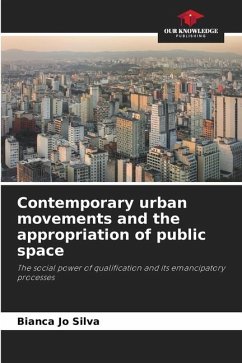
The Renewal of a Public Space - Homelessness and Urban Planning in LA
An Exploratory Study of Pershing Square in Downtown Los Angeles
Versandkostenfrei!
Versandfertig in 6-10 Tagen
37,99 €
inkl. MwSt.

PAYBACK Punkte
19 °P sammeln!
This book analyzes the processes and discourses located around the proposal to redesign Pershing Square, the oldest and most central open public space in Los Angeles. As one of the oldest structures Pershing Square is a representation of the metropolis' past and present character and condition. Hence, the fact that the place has been ignored for the second half of the 20th century and just recently moved back into the center of public attention mirrors past and present societal values. Pershing Square is located only a few blocks away from Skid Row, the area with the highest concentration of h...
This book analyzes the processes and discourses located around the proposal to redesign Pershing Square, the oldest and most central open public space in Los Angeles. As one of the oldest structures Pershing Square is a representation of the metropolis' past and present character and condition. Hence, the fact that the place has been ignored for the second half of the 20th century and just recently moved back into the center of public attention mirrors past and present societal values. Pershing Square is located only a few blocks away from Skid Row, the area with the highest concentration of homeless people in the U.S. The place is therefore strongly frequented by homeless persons. In this context the apparent question is how a redesign of Pershing Square will affect these people. Will they still be there after the renewal? Are there any attempts to integrate the homeless into the planning process and the future social structure of the place? Or has the renewal itself be understood as a set of exclusionary mechanisms?












